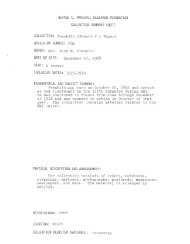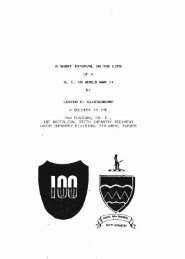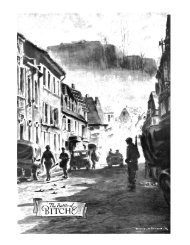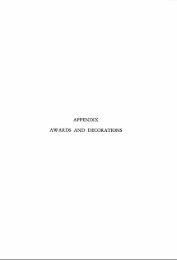Joint Operating Concept (JOC) - GlobalSecurity.org
Joint Operating Concept (JOC) - GlobalSecurity.org
Joint Operating Concept (JOC) - GlobalSecurity.org
Create successful ePaper yourself
Turn your PDF publications into a flip-book with our unique Google optimized e-Paper software.
nonconventional military and paramilitary operations without being members of<br />
the regular armed forces, police, or other internal security forces of any country.<br />
See also conventional, nonconventional. (Proposed)<br />
irregular forces. Armed individuals or groups who are not members of the<br />
regular armed forces, police, or other internal security forces. (JP 1-02)<br />
irregular warfare. A violent struggle among state and non-state actors for<br />
legitimacy and influence over the relevant populations. Irregular warfare favors<br />
indirect and asymmetric approaches, though it may employ the full range of<br />
military and other capabilities, in order to erode an adversary’s power, influence,<br />
and will. Also called IW. (Proposed)<br />
irregular warfare campaign. A campaign that primarily focuses on irregular<br />
warfare operations or activities. (Proposed)<br />
<strong>Joint</strong> Capabilities Integration and Development System. The Department of<br />
Defense system for identifying, assessing, and prioritizing joint military<br />
capability needs. Also called JCIDS. (Proposed)<br />
line(s) of operation. 1. Lines that define the directional orientation of the force<br />
in time and space in relation to the enemy. They connect the force with its base<br />
of operations and its objectives. (JP 1-02). 2. An arrangement of military forces<br />
or capabilities that links decisive points to achieve desired effects that may bear<br />
no direct relationship to an enemy’s physical activities. Also called logical lines<br />
of operation (LLO). (Proposed definition derived from Army FM 3-0)<br />
low-intensity conflict. Political-military confrontation between contending<br />
states or groups below conventional war and above the routine, peaceful<br />
competition among states. It frequently involves protracted struggles of<br />
competing principles and ideologies. Low intensity conflict ranges from<br />
subversion to the use of armed force. It is waged by a combination of means,<br />
employing political, economic, informational, and military instruments. Low<br />
intensity conflicts are localized generally in the Third World, but contain regional<br />
and global security implications. Also called LIC.<br />
military capability. The ability to achieve a specified wartime objective (win a<br />
war or battle, destroy a target set). It includes four major components: force<br />
structure, modernization, readiness, and sustainability. a. Force Structure -<br />
Numbers, size, and composition of the units that comprise our defense forces;<br />
e.g., divisions, ships, air wings. b. Modernization - Technical sophistication of<br />
forces, units, weapon systems, and equipment. c. Unit Readiness - The ability<br />
to provide capabilities required by the combatant commanders to execute their<br />
assigned missions. This is derived from the ability of each unit to deliver the<br />
outputs for which it was designed. d. Sustainability - The ability to maintain<br />
the necessary level and duration of operational activity to achieve military<br />
objectives. Sustainability is a function of providing for and maintaining those<br />
levels of ready forces, materiel, and consumables necessary to support military<br />
effort. (JP 1-02)<br />
Appendix B<br />
B-4
















